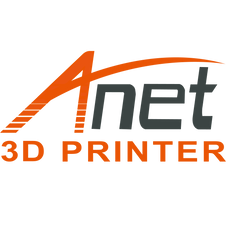Enable Retraction to Prevent 3D Printing Stringing or Oozing in Simplify3D
Retraction is an important setting in 3D printing. Enabling retraction and setting correct retraction parameters can sometimes prevent 3D printing stringing or oozing from happening on a desktop FDM 3D printer.
What is 3D printing retraction?
3D printing retraction is a setting option in a slicer, like Simplify3D or Cura, which enables filament retraction inside the nozzle according to preset parameters when the print head moves to print different part of a 3D model.

When retraction enables, filament will retract upwards inside the nozzle.
How 3D printing stringing or oozing happens?
When printing without retraction enabled, low viscosity filament like PLA tends to leak from the nozzle because of inertia while the print head moves to print the next part of a 3D model, and tiny filament lines form in between the open space of the two parts. Hence, 3D printing stringing or oozing happens.

3D printing stringing and oozing
Why retraction can prevent 3D printing stringing or oozing from happening?
If we enable retraction in Simplify3D or Cura, the extruder retracts filament inside the nozzle while the print head moves to the next printing part. Fewer filament inside the nozzle means less inertia caused filament leak. Thus, if retraction parameters are perfectly set according to specific print, we can largely prevent 3D printing stringing or oozing from happening.

Enabled retraction at extruder setting interface of Simplify 3D

Print with retraction enabled, no filament stringing on the surface.
Print test model to decide if retraction is needed
Sometimes, it’s difficult to know the exact features of a specific filament we don’t use before. We can print a test model like below to decide if retraction is needed and evaluate retraction parameter settings before we go to print something we want.
Test model download link:
https://drive.google.com/drive/folders/1bFvOJPEKu1IP5qRC1N9yiKaBFzM5zbfB?usp=sharing
How to set retraction parameters in Simplify 3D?
Now we know the important of enabling retraction and let’s proceed to how to set appropriate retraction parameters in Simplify3D.
Open a 3D file in Simplify3D and then double click “Process 1” on the left. Print setting interface pops out.
We can enable retraction in the extruder section and set appropriate parameters for retraction distance, extra restart distance, retraction vertical lift and retraction speed for the print.

1.Retraction Distance
Retraction distance varies according to the extruder type of your 3D printer.
For direct drive extruder, retraction distance should be 1-2mm; for Bowden extruder, retraction distance should be higher, usually 3-5mm.
2.Extra Restart Distance
Extra restart distance defines extra length of restarted extrusion. The value can be either positive or negative to increase or decrease length. It can reduce filament speckles and enhance overall neatness of your print.
3.Retraction Vertical Lift
Retraction vertical lift is to raise the nozzle while retraction happens and can avoid nozzle hitting the model. Retraction vertical lift value can’t be large, or it will lead to filament stringing. For printing ordinary 3D models, usually it can be set to 0.
4.Retraction Speed
Retraction speed should be higher for quick retraction. For extruder with reduction, retraction speed can be set at 20-30mm/min; for extruder without reduction, the value should be set at 80-100mm/min or even higher.
Enable ooze control behavior options in advanced settings

After setting retraction parameters, we need to enable additional ooze control behavior options in the advanced section (see above picture), including “Only retract when crossing open space”, “Force retraction between layers” , “Minimum travel for retraction”, “Perform retraction during wipe movement” and “Only wipe extruder for outer most perimeters”.
1.Only retract when crossing open space
“Only retract when crossing open space” avoids unnecessary retraction when nozzle moves to print within an enclosed part of a print.
Open space means a gap between two adjacent printing parts. For example between the two poles of above printed test model, there is an open space. When the nozzle moves to print the other pole, retraction is necessary.

But in above picture, between the red line connected green circles, it’s an enclosed section. Stringing won’t affect the result. Thus retraction is not necessary.
2.Force retraction between layers
“Force retraction between layers” can avoid the print head leaving track on the top of every layer when it moves to print the next layer.
3.Minimum travel for retraction
“Minimum travel for retraction” defines the minimum travel required for retraction. It prevents unnecessary retraction from happening within the preset minimum travel value. If retraction is too frequent, filament tends to grind and break. It’s recommended to set “Minimum travel of retraction” value between 3mm and 5mm.
4.Perform retraction during wipe movement
“Perform retraction during wipe movement” is to retract while a 3D printer wipes its nozzle. It can further prevent filament oozing.
Frankly to say, enabling retraction options in extruder settings and ooze control behavior options in advanced settings, and giving appropriate values for different options according to the test print in Simplify3D, we can tune both retraction and ooze control behavior settings well and prevent 3D printing stringing or oozing from happening.

Leave a comment